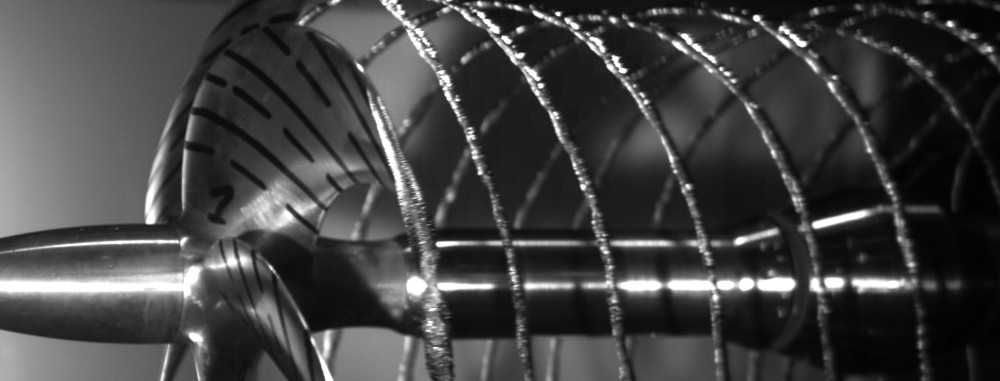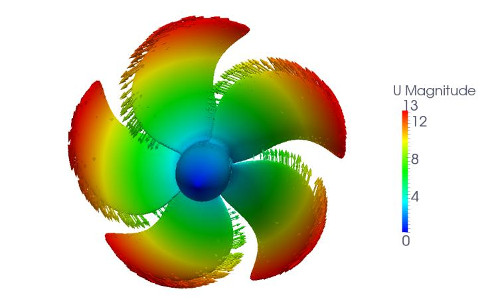
- Full title Henucav: ferramenta numérica para a predicción da cavitación en hélices e sua validación
- Funding entity Xunta de Galicia
- Researchers Fernando López Peña, Pablo Fariñas Alvariño, Marcos Míguez González, José Daniel Pena Agras
- Start date 01/10/2009
- End date 30/09/2012
- Centro Tecnolóxico do Naval Galego
- Universidade da Coruña
Description
The HENUCAV project was concerned with developing a numerically validated tool for predicting cavitation in marine propellers. This tool is based on the open source CFD OpenFoam platform. To achieve this objective, the study embraced:
- Experimental research
- Numerical research
- The development of a platform in which the numerical tool could be implemented.
At University of A Coruña, a cavitation tunnel was used for the experimental part. The team could thus perform the characterisation of a downscaled propeller model in single-phase and cavitating conditions. The tests included measuring thrust and torque, characterising the incident velocity field, carrying out visualisations with high-speed video and measuring irradiated pressure fluctuations.
The aim of the numerical phase was to evaluate the validity of the cavitation models associated with different turbulence models. It was done by comparing numerical predictions with experimental results. First of all, the validation work was carried out for different angles of attack with a hydrodynamic NACA0015 profile. This test case also allowed us to address the problem of predicting noise and erosion risk in terms of cavitation regime type. Afterwards we carried out numerical simulations of the propeller characterised experimentally in the framework of this project. In order to validate the results properly, the moving mesh technique was used and the phase change model parameters were slightly adjusted.
We have integrated all these skills to develop a CFD flow simulation platform for flows in propellers based on OpenFoam. A large part of the pre-processing tasks, including mesh generation, and the post-processing ones were semi-automated.
The Henucav project has significantly improved our knowledge in the field of marine propulsion, especially when it comes to predicting cavitation regimes in propellers.
